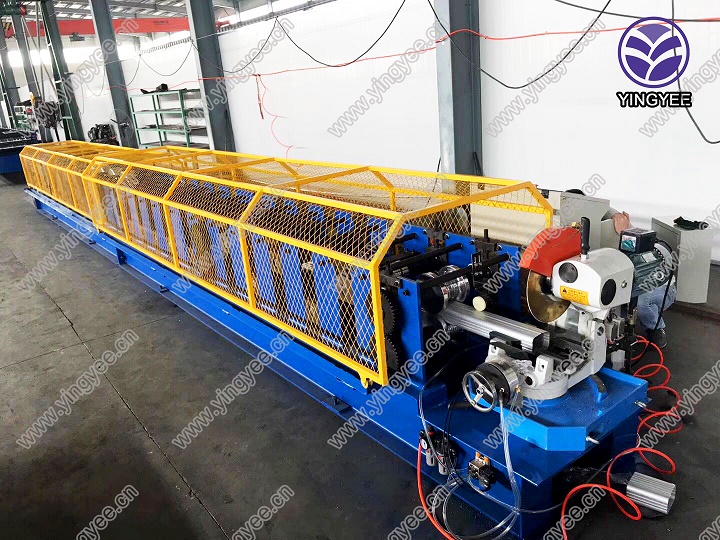
Guardrail Block Spacer Cold Bending Machine A Revolution in Infrastructure Development
In the realm of infrastructure development, particularly in highway construction and maintenance, the guardrail block spacer cold bending machine has emerged as a significant technological advancement. This machine plays a pivotal role in the manufacturing of guardrail spacers, which are integral to the stability and effectiveness of highway guardrails. As road safety becomes an increasingly pressing concern, understanding the functionality and benefits of this machinery is essential.
Understanding Guardrail Block Spacers
Guardrail block spacers serve as vital connectors that hold guardrails firmly in place, ensuring they absorb impact effectively during vehicle collisions. These spacers are typically made from high-strength materials that can withstand extreme conditions and forces. The cold bending machine facilitates the production of these spacers, enabling them to be shaped precisely to meet the necessary specifications for various guardrail systems.
The Cold Bending Process
The cold bending process is a method of shaping materials without the application of heat, maintaining the integrity and strength of the material. In the case of guardrail spacers, this technique allows for the bending of metal components such as steel or aluminum to create the required profiles. The cold bending machine is equipped with advanced technology to ensure accuracy, efficiency, and repeatability in the bending process.
Key Features of Cold Bending Machines
Modern guardrail block spacer cold bending machines come with several remarkable features that enhance their performance
1. Automated Controls Most machines are equipped with computerized controls that allow operators to input specifications with ease. This automation reduces the risk of human error and ensures uniform output.
2. High-Precision Bending With advanced sensors and hydraulic systems, these machines achieve high precision in bending operations. This precision is critical for ensuring that the spacers fit perfectly during installation.
3. Multiple Material Compatibility Many cold bending machines can handle various materials, such as steel, stainless steel, and aluminum. This versatility allows manufacturers to produce spacers suitable for different environmental conditions and requirements.

4. Efficiency and Productivity The design of these machines maximizes production efficiency. Their ability to handle large volumes of bends and their minimal downtime contribute to increased productivity on the manufacturing floor.
5. User-Friendly Interface Modern machines are designed with operator ergonomics in mind, featuring intuitive interfaces that simplify the operation and programming processes.
Advantages of Using Cold Bending Machines
The adoption of guardrail block spacer cold bending machines offers numerous advantages to infrastructure manufacturers
1. Cost Efficiency The cold bending process typically requires less energy compared to hot bending methods, leading to reduced operational costs. Additionally, the durability of the spacers produces longer-lasting installations, cutting down on maintenance expenses.
2. Enhanced Safety High-quality guardrail spacers exhibit better performance in protecting vehicles and their occupants in the event of a crash. By ensuring precision in manufacturing, these machines contribute to improved road safety.
3. Environmental Considerations Cold bending processes often have a lower environmental impact than traditional methods due to reduced energy consumption and less waste production.
4. Customization Options Manufacturers can easily modify the bending parameters to accommodate varying designs and specifications, allowing for customized solutions that meet specific project needs.
5. Streamlined Production The automation capabilities of these machines streamline the production process, enabling manufacturers to respond quickly to fluctuating demands in the construction industry.
Conclusion
The guardrail block spacer cold bending machine represents a significant innovation in the infrastructure sector, combining advanced technology with practical applications to enhance road safety. As the demand for efficient, cost-effective, and environmentally conscious construction practices continues to grow, the role of such specialized machinery will undoubtedly expand. Embracing this technology will not only boost productivity in manufacturing but also contribute to the overall safety of road networks, thereby benefiting society as a whole. As we look towards the future of infrastructure development, the importance of such technological advancements will be paramount in addressing the challenges of road safety and material efficiency.